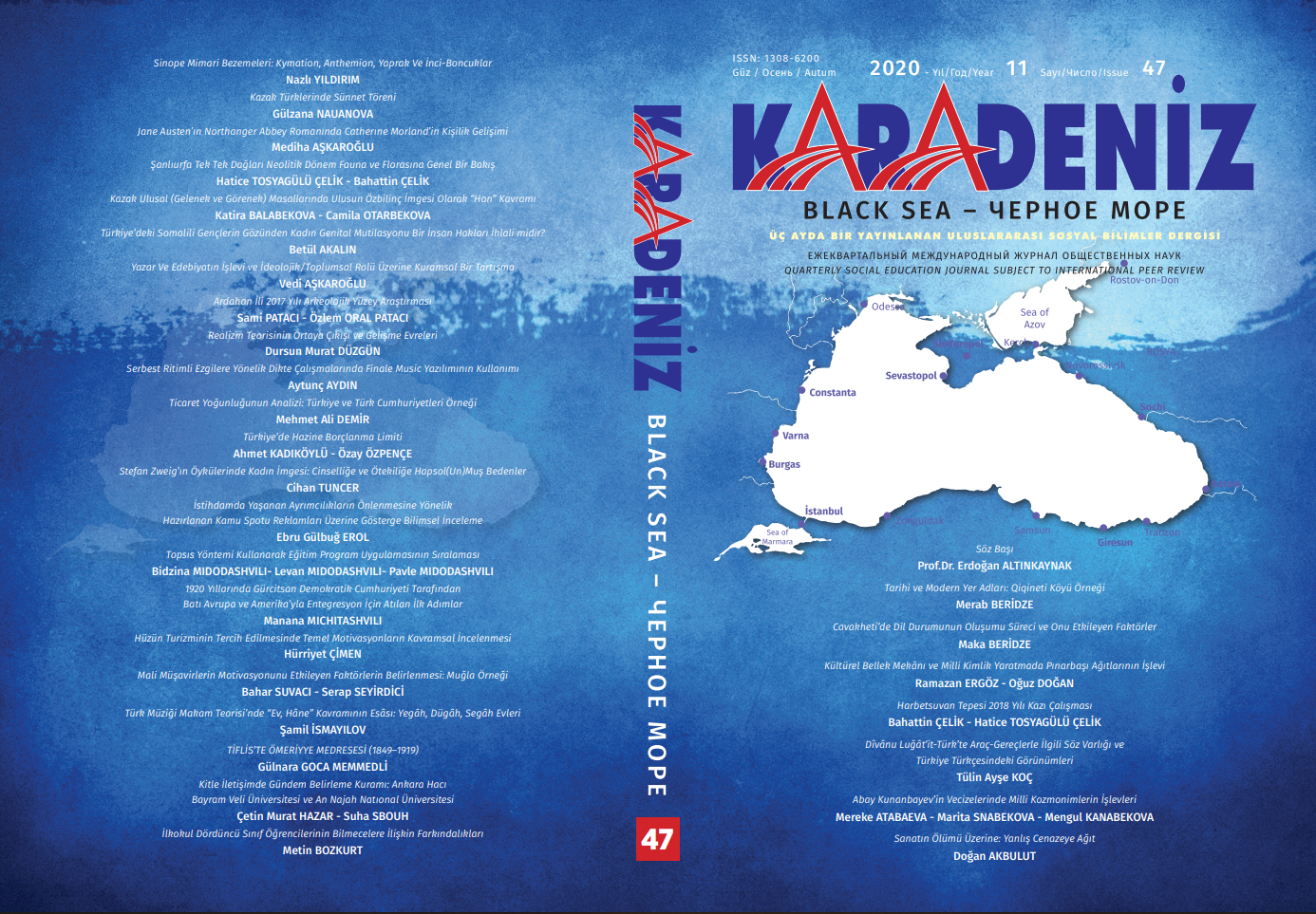ŞANLIURFA TEK TEK DAĞLARI NEOLİTİK DÖNEM FAUNA VE FLORASINA GENEL BİR BAKIŞ
ŞANLIURFA TEK TEK MOUNTAINS NEOLITHIC PERIOD
AN OVERVIEW OF FAUNA AND FLORA
Author(s): Hatice TOSYAGÜLÜ ÇELİK, Bahattin ÇelikSubject(s): Ancient World
Published by: Kültür Ajans Tanıtım ve Organizasyon
Keywords: Tek Tek Mountains; Flora; Fauna; Neolithic Period; Harbetsuvan Tepesi; Göbekli Tepe; Karahan Tepe;
Summary/Abstract: Şanlıurfa, which has a very hot and dry climate today, is a region similar to the ecology of the Neolithic period and is a region with a low plateau character bordered by Tek Tek Mountains, which is located approximately 42 km east of the city center, and Harran in the west and Ceylanpınar plains in the east. Its approximate area is 19,335 hectares and its geological structure consists of limestones. Approximately 80% of the Tek Tek Mountains area is meadow-pasture and 13% is agricultural land. Tek Tek Mountains and its surroundings are a very rich region in terms of Historical and Cultural Heritage. The discovery of Harbetsuvan Hill and Karahan Tepe, which are dated to the same period as Göbekli Tepe, once again made the region important. Other old settlements within the borders of Tek Tek Mountains are the ancient settlements of Soğmatar and Şuayb Şehri. These settlements appear as settlements that were inhabited from the Chalcolithic period to the Late Roman period. Tek Tek Mountains are located in the Iran-Turan phytogeographical region in terms of vegetation. Although there are a wide variety of plant species in Tek Tek Mountains, wild wheat and barley species have also been identified. At the same time, there are melengiç and fig trees in the bush type class in the region. In the archaeobotanical analyzes carried out in Göbekli Tepe, located on the summit of Susuz Mountains very close to Tek Tek Mountains region, the remains of similar plants observed today were found. In the archaeofaunal studies of Göbekli Tepe, animal species such as gazelles, foxes and desert varane were found. This study is a preliminary comparison of the finds obtained as flora and fauna in the Neolithic period in the region and today's finds. In the future, a more comprehensive study will be carried out thanks to the finds uncovered in Harbetsuvan Hill and Karahan Tepe located in Tek Tek Mountains.
Journal: Karadeniz Uluslararası Bilimsel Dergi
- Issue Year: 2020
- Issue No: 47
- Page Range: 159-168
- Page Count: 10
- Language: Turkish

